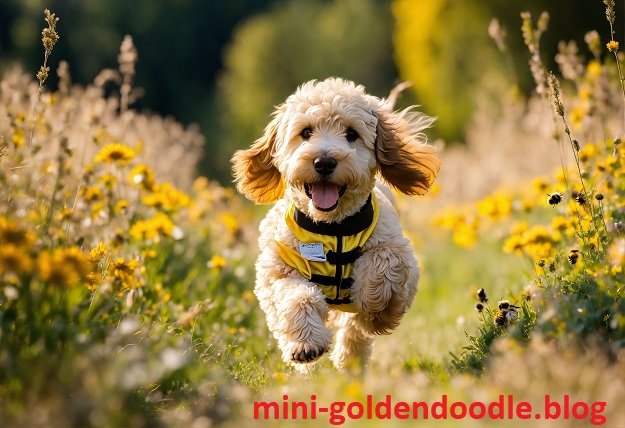Introduction
Thanks to their charming appearance and amiable disposition, labradoodle puppy labradoodles have won the hearts of dog lovers all over the world. These hybrid dogs, who are descended from Labrador Retrievers and Poodles, are prized for their intelligence, hypoallergenic coats, and loving personalities. If you’re thinking about getting a Labradoodle puppy, this in-depth guide will provide you all the knowledge you need to make that decision.
Origins and History of the Labradoodle
The Labradoodle was first developed in Australia in the 1980s when breeders crossed the non-shedding Poodle with the clever and trainable Labrador Retriever in an attempt to produce a hypoallergenic guide dog. The resulting product was a hybrid dog that has qualities in common with both parent breeds, such as the amiable disposition of the Labrador and the low-shedding coat of the Poodle. These days, labradoodles are in demand as family pets and guide dogs due to their loving dispositions and ability to accommodate allergy sufferers.
Physical Characteristics and Coat Types labradoodle puppy
Standard, medium, and tiny are the three major sizes of Labradoodles, which vary based on the size of the Poodle parent used for breeding. Miniature Labradoodles weigh considerably less, often between 15 and 30 pounds, whereas standard Labradoodles can weigh between 50 and 65 pounds and measure between 21 to 24 inches height at the shoulder. Their coats might be curly, wavy, or straight for some of them, which adds to their hypoallergenic characteristics.
Temperament and Personality Traits
Because of their outgoing personality and reputation for friendliness, labradoodles are great companions for both individuals and families. They are rather easy to train because they are bright and eager to please. As long as they have enough exercise and mental stimulation, labradoodles may thrive in a variety of living situations. They are also well-known for their playful nature and flexibility.
Exercise and Training Needs
Owing to their lively and perceptive disposition, Labradoodles need frequent exercise to maintain good health and manners. For them to stay active and avoid boredom, regular walks, playtime, and interactive toys are crucial. To properly harness their intelligence and obedience, consistent training sessions using positive reinforcement techniques are essential starting at a young age.
Grooming and Care
Regular grooming is necessary to preserve the hypoallergenic qualities of a labradoodle’s coat and avoid matting. To keep their fur free of tangles, they may require brushing more frequently or a few times a week, depending on the sort of coat they have. In addition to regular showers with dog-friendly shampoo, dental care, ear cleaning, and nail cutting should be included in their grooming regimen.
Feeding and Nutrition
For Labradoodle puppies to be healthy and happy, they must have a proper diet. They ought to be provided premium dog food that is appropriate for their age, size, and degree of exercise. To encourage their growth and development, puppies usually require short, frequent meals throughout the day. As they get older, they can be fed on a regular schedule.
Health Concerns and Lifespan
Although Labradoodles are typically healthy dogs, they can be susceptible to some genetic health issues shared by Poodles and Labrador Retrievers. These can include certain skin allergies, progressive retinal atrophy, and hip dysplasia. Preventive care, immunizations, and routine veterinary exams help guarantee a long and healthy life for them. Labradoodle lifespans typically range from 12 to 14 years.
Socialization and Interaction
In order for Labradoodle puppies to grow up to be well-adjusted adults, early socialization is essential. From an early age, exposing kids to a variety of people, animals, settings, and circumstances helps avoid behavioral problems like shyness or violence. Their confidence is bolstered by positive encounters and experiences, which also impart lifelong social skills.
Choosing a Breeder or Adoption Center
It is crucial to do your homework and pick a breeder or adoption center for a Labradoodle puppy that places a high priority on the health and welfare of their pets. Reputable breeders are open and honest about their breeding methods, test parent dogs for health issues, and give puppies the care and socialization they need. Another fantastic method to provide a loving home for a Labradoodle in need is to adopt from a shelter or rescue organization.
Bringing Your Labradoodle Puppy Home
Making your house a secure and cozy space is part of getting ready for a Labradoodle puppy. Buying essentials like a kennel, food and water bowls, bedding, toys, and grooming equipment falls under this category. Your new puppy will settle in more easily if you puppy-proof your house to remove any potential hazards and create a schedule for feeding, potty training, and exercise. From the beginning, giving your Labradoodle puppy lots of love, care, and positive reinforcement can assist to strengthen your bond.
Conclusion
To sum up, Labradoodle pups make excellent friends because of their intelligent, amiable disposition, and hypoallergenic coat. Whether you are drawn to their fun personality or think they would be a good fit for allergy-stricken families, it is important to know about their history, temperament, care requirements, and health issues in order to provide them a happy and healthy life.
FAQ
Are Labradoodles good pets for families with allergies?
Given their reputation for being hypoallergenic, labradoodles are a good fit for households with moderate allergy sufferers. It is advised to spend time with a Labradoodle prior to adoption, as individual dogs may differ.
How much exercise do Labradoodle puppies need?
Being lively dogs, labradoodles need to be exercised frequently to maintain good health and happiness. For their wellbeing, playtime, walks every day, and mental stimulation are crucial.

